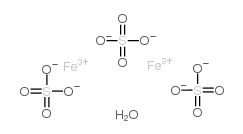Iron induces hepatocytes death via MAPK activation and mitochondria-dependent apoptotic pathway: beneficial role of glycine.
Sudip Bhattacharyya, Jyotirmoy Ghosh, Parames C Sil
文献索引:Free Radic. Res. 46(10) , 1296-307, (2012)
全文:HTML全文
摘要
In the present study we investigated the beneficial role of glycine in iron (FeSO₄) induced oxidative damage in murine hepatocytes. Exposure of hepatocytes to 20 μM FeSO₄ for 3 hours enhanced reactive oxygen species (ROS) generation and induced alteration in biochemical parameters related to hepatic oxidative stress. Investigating cell signalling pathway, we observed that iron (FeSO₄) intoxication caused NF-κB activation as well as the phosphorylation of p38 and ERK MAPKs. Iron (FeSO₄) administration also disrupted Bcl-2/Bad protein balance, reduced mitochondrial membrane potential, released cytochrome c and induced the activation of caspases and cleavage of PARP protein. Flow cytometric analysis also confirmed that iron (FeSO₄) induced hepatocytes death is apoptotic in nature. Glycine (10 mM) supplementation, on the other hand, reduced all the iron (FeSO₄) induced apoptotic indices. Combining, results suggest that glycine could be a beneficial agent against iron mediated toxicity in hepatocytes.
相关化合物
| 结构式 | 名称/CAS号 | 分子式 | 全部文献 |
|---|---|---|---|
 |
硫酸铁(Ⅱ)铵分析滴定液
CAS:15244-10-7 |
Fe2H2O13S3 |
|
Simultaneous removal of nitrogen and phosphorus from wastewa...
2013-01-01 [Water Sci. Technol. 67(12) , 2761-7, (2013)] |
|
Enhanced arsenite removal from water by Ti(SO4)2 coagulation...
2013-09-01 [Water Res. 47(13) , 4340-8, (2013)] |
|
Characterization of cake layer structure on the microfiltrat...
2013-02-01 [J. Environ. Sci. (China) 25(2) , 308-15, (2013)] |
|
Preference and drinking behavior of lactating dairy cows off...
2013-02-01 [J. Dairy Sci. 96(2) , 1164-76, (2013)] |
|
Removal of nickel and cadmium from battery waste by a chemic...
2014-01-01 [Environ. Technol. 35(9-12) , 1263-8, (2014)] |